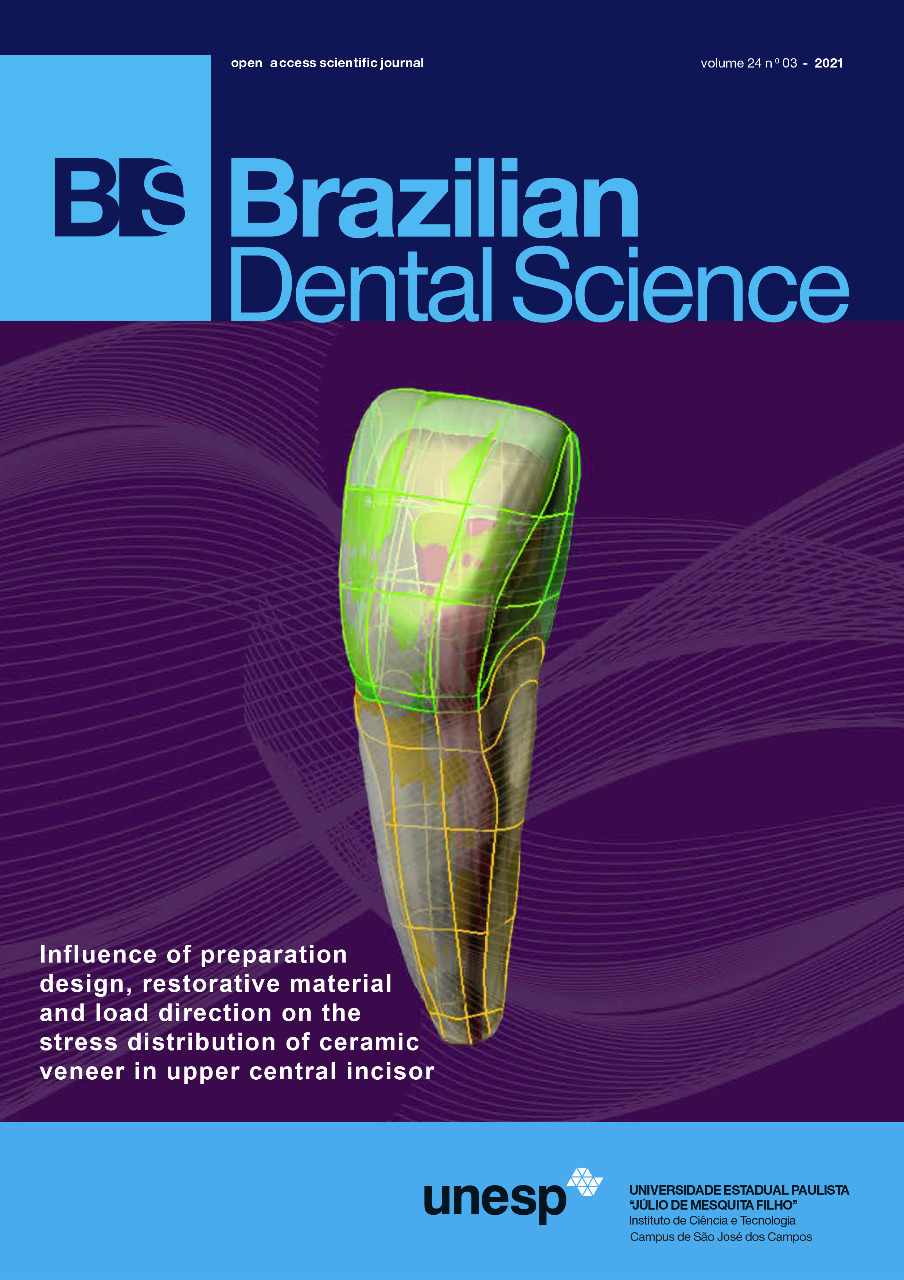The Effect of Different Surface Treatment Protocols on the Shear Bond Strength to Repressed Lithium Disilicate Glass Ceramics
DOI:
https://doi.org/10.14295/bds.2021.v24i3.2462Resumo
Objective: The present study aimed to evaluate the effect of repressing and different surface treatment protocols on the shear bond strength of lithium disilicate glass-ceramics. Material and Methods: A total of 52 lithium disilicate glass-ceramic discs (IPS emax Press, Ivoclar Vivadent) were fabricated using the heat-press technique. The discs were divided into two groups; group (P): discs fabricated from new e.max ingots (n=26), group (R): discs fabricated from reused e.max buttons (n=26). Each group was subdivided into subgroup (E): discs were etched with hydrofluoric acid (9.5%) (n=13), subgroup (S): discs were air-abraded with 110 µm alumina particles. All specimens were subjected to X-ray Diffraction analysis, Scanning Electron Microscope, Energy Dispersive X-Ray, Thermo-Cycling, and Shear Bond Strength Testing. Results: Repressed Etched subgroup (RE) recorded the statistically highest shear bond strength value, followed by the Pressed Etched subgroup (PE), while the statistically lowest shear bond strength value was recorded for the Pressed Air-Abraded subgroup (PS) and Repressed Air-Abraded subgroup (RS). Conclusion: Repressing the leftover buttons for the construction of new lithium disilicate glass-ceramic restorations has no adverse effect on the bond strength of the resin cement to the ceramic. Hydrofluoric acid surface treatment improves the shear bond strength and durability of resin cement bond to both pressed and repressed lithium disilicate glass-ceramic. Air-abrasion cannot be considered as a reliable surface treatment when bonding to lithium disilicate glass-ceramics.
Keywords
Heat pressed; Lithium disilicate glass-ceramics; Repressing; Shear bond strength; Surface treatment.
Downloads
Downloads
Publicado
Versões
- 2021-07-01 (3)
- 2021-07-01 (2)
- 2021-07-01 (1)
Como Citar
Edição
Seção
Licença
TRANSFERÊNCIA DE DIREITOS AUTORAIS E DECLARAÇÃO DE RESPONSABILIDADE
Toda a propriedade de direitos autorais do artigo "____________________________________________________________________" é transferido do autor(es) para a CIÊNCIA ODONTOLÓGICA BRASILEIRA, no caso do trabalho ser publicado. O artigo não foi publicado em outro lugar e não foi submetido simultaneamente para publicação em outra revista.
Vimos por meio deste, atestar que trabalho é original e não apresenta dados manipulados, fraude ou plágio. Fizemos contribuição científica significativa para o estudo e estamos cientes dos dados apresentados e de acordo com a versão final do artigo. Assumimos total responsabilidade pelos aspectos éticos do estudo.
Este texto deve ser impresso e assinado por todos os autores. A versão digitalizada deverá ser apresentada como arquivo suplementar durante o processo de submissão.




























